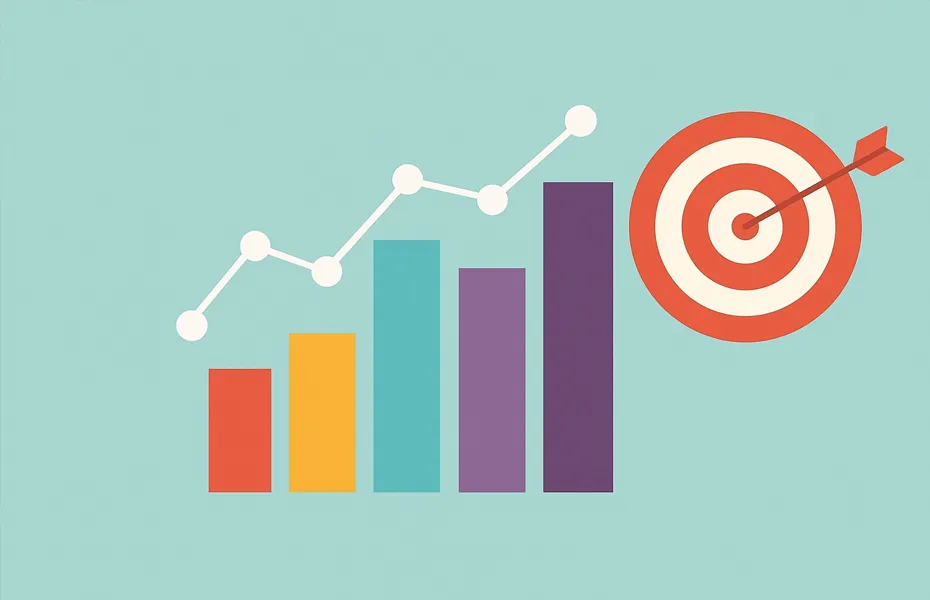Copyright mxmindia

It’s become a rite of passage in Indian agency and brand circles (and I suspect most elsewhere in the world): The senior marketer greying at the temples, sighs and says: “Performance marketing? It’s killing brand building. It’s short-termism.” Meanwhile, a younger cohort bangs away at spreadsheets and ROAS dashboards, proud of their clicks, installs and conversions, scornful of “brand fluff”. Who’s right? And who’s wrong? The short answer is both. The truth lies somewhere in between. Let’s review the evidence—what performance marketing (PM) has delivered, where it overreached, and how the next chapter is being written with AI, playback loops and commerce-media mash-ups. At its core, performance marketing is: you pay when a defined action happens. In the late 1990s and early 2000s, the concept was narrow—affiliate networks, CPA models and click-to-sale tracking. As digital matured, search/PPC became mainstream, and performance meant “lower funnel,” measurable, and optimisation-driven. From 2017 onward, social ads with immediate-response goals, marketplace ads, and app installs. Performance is split into many digital channels. Today, the frontier is algorithmic and AI-enabled: optimisation is real-time, creative variations are generated at scale, and platforms are pushing “outcome-oriented” buying modes rather than pure CPM buys. In other words, performance moved from a side-channel to a business-model shift—budget allocation, agency compensation, data stacks, martech architecture all got rewired. And why wouldn’t they? As the Harvard Business Review observed, performance marketing “solves the century-old Wanamaker problem” – you can finally link spend to outcomes. Of course, it’s not (and never was) purely mechanistic: even performance marketing campaigns rely on creative messaging, brand resonance, supply chain execution and longer-term customer value. The sharp contrast between “brand vs performance” is misleading. How big is performance marketing? Digital (search, social, commerce and digital display) now claims the lion’s share of ad budgets, with performance-oriented channels among the fastest-growing. Industry commentary often places “performance or performance-like” media at circa 40% of all advertising budgets (not just digital) in many mature markets. Some sectors (e-commerce, D2C, gaming, fintech) allocate 60-90% of their working media to performance-type spend, while other traditional-heavy sectors (CPG, FMCG) stay brand-skewed but are slowly shifting. According to CRISIL, India’s total ad market is above Rs 1 lakh crore (2025 estimate), with digital accounting for 46%. Marketers in India report that in high-velocity categories (mobility/ride-hailing/gaming/fintech), the share of performance marketing is already 40%+ of digital spend. In contrast, in older categories (mass FMCG, heritage brands), performance still accounts for only a minority of spend, though it is creeping up. Does performance marketing work? Yes, it does. But it is not a panacea, and many of the criticisms from “vintage” ad-folk are valid. Performance marketing delivers real, measurable ROI with the clarity of the relationship between spend and action —a compelling truth. However, over-reliance on low-funnel “clearly convertible” audiences while ignoring brand and market penetration can lead to diminishing returns. Research conducted in Australia suggests that companies that overinvest in performance-only can reduce ROI by 20-50% whereas a more balanced brand+performance mix can lift ROI by 25-100%. App-install campaigns are efficient, but the quality and lifetime value (LTV) of users acquired are increasingly at risk due to rising competition, data breaches and cost inflation. Also, measurement sophistication (eg, accurate multi-touch attribution, long-term incremental lift) is still less mature in many Indian firms. What marketers need to keep in mind is the maxim “brand builds perfromance”. Strong brand equity tends to lead to higher clicks, higher conversion rates and better retention. In short, performance is easier and more efficient when brand strength exists. Without a brand-performance balance, overinvesting in performance emphasises near-term conversion at the expense of brand health, while underinvesting in market penetration risks hollowing out future growth. Furthermore, by funnelling money into platforms like Google, Meta, and the big e-tailers, it raises questions of ecosystem dependency. The examples of consequences of overinvesting in performance marketing are rife. The D2C playbook that once worshipped ROAS now reads like a cautionary tale—growth hacked to death by its own performance dashboard. While reliable data on Indian D2C brands is yet to be made public, D2C brands in the US like Casper (mattress start-up), Blue Apron (meal kits), Dollar Shave Club (after the Unilever acquisition) and Bombas, Allbirds and Glossier (beauty and apparel) poured 60-90% of their budgets into Facebook and Google performance ads chasing “cost per acquisition” (CPA) efficiency. They scaled quickly but built shallow brand equity. The consequence was rising customer acquisition costs (CAC) as the in-market audience saturated, weak retention and repeat rates, fading brand differentiation as performance creatives were entirely offer-driven. As a result, investor sentiment shifted, with Wall Street punishing several post-IPO D2Cs for “growth without loyalty”. The stories of ride-hailing apps—Ola (in India) and Uber, Lyft, and Grab (in markets across the world) — are another cautionary tale in performance marketing. Massive paid-acquisition budgets—search, app installs, referrals—drove adoption, but unsustainable CAC levels. Business viability depended heavily on digital performance and incentives to maintain rider and driver liquidity. Churn rates were astronomical once promo budgets were cut. Brand preferences were shallow -users switched apps for Rs20 cheaper fares. Once subsidies were withdrawn, retention and loyalty collapsed. Performances created transactions, not trust. A painful saga of the perils of e-performance marketing in India is Edtech because, besides commercial failure, it hurt lakhs of innocent consumers. Fueled by pandemic demand and easy funding, Indian edtech majors like Byju’s, Vedantu and WhiteHat Jr. overinvest in lead-gen, paid search and tie-ups, treating every enrolment as a performance metric. And as aggressive lead-gen turned to scam, brand fatigue and distrust set in. CAC ballooned. Byju’s reportedly spent up to Rs3000-Rs4000 to acquire paying customers. Negative publicity (e.g., pressure sales allegations) harms long-term brand trust. Performance marketing, untempered by brand ethics and experience design, can quickly erode brand reputation. Take the case of the food delivery and q-commerce sectors. In their early phases, Swiggy, Zomato and Blinkit relied heavily on short-term incentives and app-install ads to drive daily transactions. For years, “performance” was the only marketing language. The consequence was strong awareness but little brand meaning beyond discounts—business model damage through rising cost per order and negative unit economics. Realising the imbalance in their performance marketing focus, these brands have shifted to “brand-first” narratives, such as Swiggy Instamart’s “When you really, really need it” and Zomato’s “For foodies, not just orders”. Performance delivers scale but not love. Building a brand story later comes at a higher cost. Another example of the perils of performance marketing comes from the Fintech and Lending Apps category. Examples of this include apps from India and Southeast Asia—LazyPay, EarlySalary, CashBean, and several BNPL start-ups. An aggressive digital acquisition to deliver on conversion KPIs with weak KYC and brand frameworks undermined trust and compliance. The consequence was poor repayment and retention, regulatory backlash, app bans, and reputational damage. Performance marketing without brand trust can be existentially risky – especially in regulated categories. Even giants can fall into the performance marketing trap. Pre-2022, Netflix admitted that its performance-driven subscriber growth masked poor brand engagement in newer markets. Disney+Hotstar’s (now JioStar) India slump post-2023 also reflected an overfocus on acquisition metrics rather than on the local brand community. Even giants can “over-optimize” for near-term conversions at the expense of emotional connection. There are also positive stories about brands that rebalanced. Nike cut back on short-term digital ads in 2020-121 and reinvested in brand storytelling and owned-media communities – regaining pricing power. Airbnb famously slashed its digital performance spend in 2020, shifted to brand storytelling, and found that its direct traffic rose while overall efficiency improved. CEO Brian Chesky called this “marketing for the long term, not the algorithm”. Cred and Dream11 in India shifted after early app-install blitzes to high-awareness, brand-building creative to sustain differentiation. Performance marketing is a tool, not a strategy. It delivers strong returns when used as part of a well-constructed marketing strategy—with product, pricing, distribution, brand, and martech all aligned. Performance marketing fails if treated as a substitute for brand building, category creation, consumer-insight-led creative and long-term funnel investment. What does the future hold for performance marketing? If the first chapter of performance marketing was “measurable outcomes, the current chapter is “algorithmic optimisation, creative at scale, commerce convergence”. Here are some trends that are likely to shape performance marketing over the next 18-24 months; AI creative plus optimisation at scale: platforms like Google’s Performance Max and Meta’s Advantage+ suite will push advertiser spend into automated, outcome-oriented models with fewer manual bids and more platform-led optimisation. Retail/ commerce media convergence: In India, especially, as e-commerce, marketplaces and quick-commerce apps become ad platforms, performance media is migrating from “click → site” to “in-app purchase or marketplace order influenced”. This convergence complicates measurement (attribution, data linking) but also raises opportunity (full-funnel, closed‐loop). Data and privacy headwinds: As IDFA/Android privacy changes bite globally and India’s regulatory stance evolves, the “clear funnel tracking” model is under pressure. Performance marketers must increasingly invest in first-party data, identity graphs and mar-tech stacks. From last-click to full-funnel + LTV: The smarter players are shifting from “cost per acquisition” to “return on first-year lifetime value”, “incrementality”, “payback period”. Many Indian firms are still catching up. Brand + performance integration via technology: AI systems are emerging that optimise across multiple objectives —reach, frequency, conversion, retention—blurring brand vs. performance silos. Research shows that brand health supports performance results (and vice versa). For Indian practitioners, the advice is clear: building the data/tech stack now is essential. The cost of entry will only rise. And the platforms are increasingly “locked in”. A high-velocity brand that wants to win will need to treat performance media as core business infrastructure, not just a campaign line-item. Whatever the future holds, the following guidelines for marketers will remain useful: Budget dialogue: If you’re entirely performance-driven, ask: What is the limit of this fuel tank? Are you investing in penetration, new audience, and future growth? If you’re entirely brand-heavy, ask: Are you delivering measurable incremental purchase behaviour? Measurement upgrade: Beyond ROAS, track longer-term metrics: retention, re-orders, margin, brand health. Ensure your martech stack supports full-funnel analysis.



